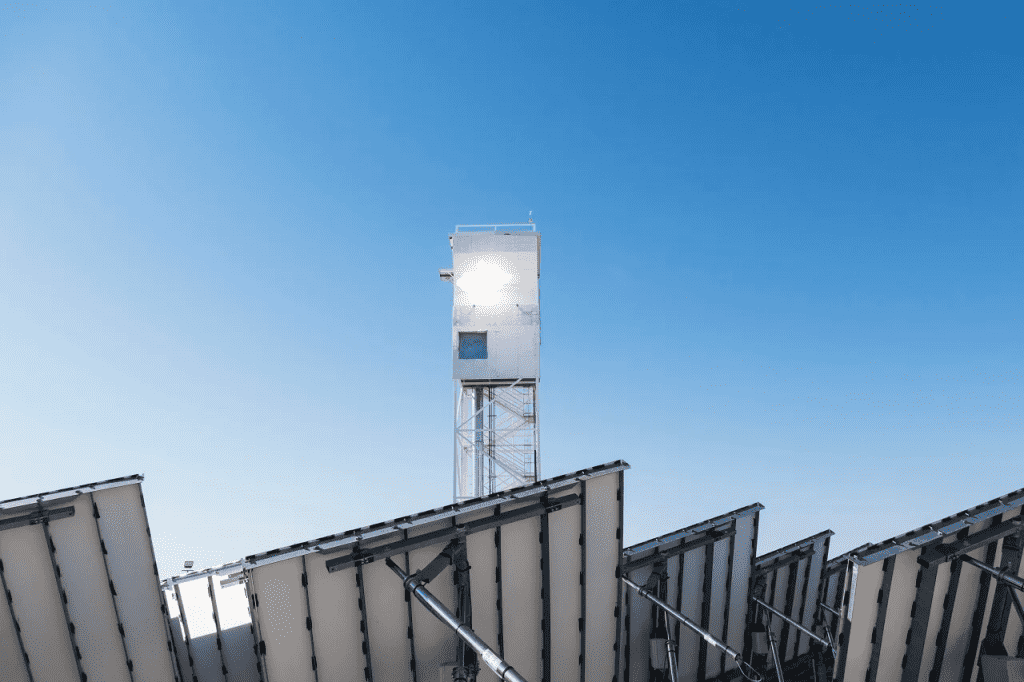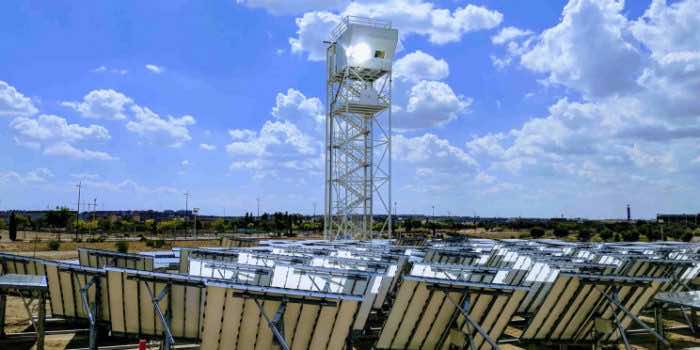Researchers have created an aircraft fuel generation system that employs water, carbon dioxide (CO2), and sunlight. They have put the plan into action, which might help the aviation industry become carbon neutral.
“We are the first to demonstrate the entire thermochemical process chain from water and CO2 to kerosene in a fully-integrated solar tower system,” says Aldo Steinfeld, a professor from ETH Zurich and the corresponding author of the paper.
The aerospace industry is responsible for around 5% of worldwide anthropogenic emissions that cause climate change. It is mainly reliant on kerosene or jet fuel obtained from crude oil. Currently, no clean alternatives are available to power long-haul commercial flights worldwide; however, the latest attempt could be a step ahead in this domain.

“With our solar technology, we have shown that we can produce synthetic kerosene from water and CO2 instead of deriving it from fossil fuels. The amount of CO2 emitted during kerosene combustion in a jet engine equals that consumed during its production in the solar plant,” Steinfeld says.
“That makes the fuel carbon neutral, especially if we use CO2 captured directly from the air as an ingredient, hopefully in the not-too-distant future.”

Steinfeld and his colleagues developed a system that harnesses solar energy to produce drop-in fuels, which are synthetic alternatives to fossil-derived fuels, as part of the European Union’s SUN-to-LIQUID project.
According to Steinfeld, solar-produced kerosene is perfectly compatible with existing aviation infrastructure for fuel storage, distribution, and application in jet engines. Moreover, it can also be combined with fossil-derived kerosene.
The team started scaling up the idea in 2017 and built a facility for producing solar fuel at the IMDEA Energy Institute in Spain. 169 sun-tracking reflecting panels make up the facility, which transmits and concentrates solar energy into a tower-mounted solar reactor. The oxidation-reduction (redox) reaction cycles are then powered by the concentrated solar energy in the porous ceria structure of the solar reactor. Next, water and CO2 are poured into the reactor, and the ceria, which can be reused, converts them into syngas.

Syngas would then be delivered to a gas-to-liquid converter, which is ultimately converted into liquid hydrocarbon fuels like kerosene and diesel.
“This solar tower fuel plant was operated with a setup relevant to industrial implementation, setting a technological milestone towards the production of sustainable aviation fuels,” Steinfeld says.
According to the research, the solar reactor’s energy efficiency was around 4% throughout the course of a nine-day operation.
According to Steinfeld, his team is putting a lot of effort into optimising parameters to raise efficiency to numbers larger than 15%. For instance, they are looking for ways to enhance the ceria structure’s capacity to absorb solar radiation. In addition, they are developing plans to recover heat lost during redox cycles.
This work is supported by the EU’s Horizon 2020 research and innovation programme and the Swiss State Secretariat for Education, Research, and Innovation.
The research was published in the journal Joule on July 20th.


